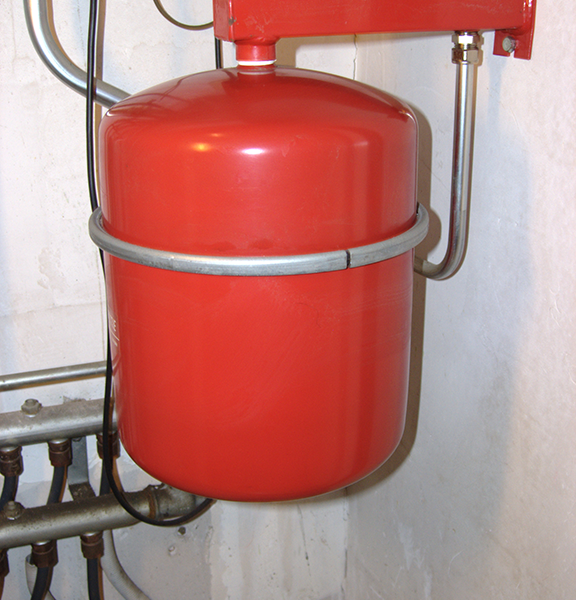A water heater expansion tank is a device that is installed in a plumbing system to help control the pressure created by the heating and cooling inside a water heater. It is usually a small, cylindrical tank that is connected to the water heater and acts as a reservoir for excess water. When water is heated, it expands, and without an expansion tank, this can lead to an increase in pressure within the plumbing system. The expansion tank allows the excess to be safely stored, preventing damage to the water heater and other components of the plumbing system.
The importance of a water heater expansion tank
The importance of cannot be overstated. Without one, the pressure created by the expansion of heated water can cause damage to the water heater, pipes, and other plumbing fixtures. This can result in leaks, bursts, or even complete failure of the system. The expansion tank acts as a safety valve, relieving pressure and preventing potential issues. By installing, you can ensure the longevity and efficiency, as well as the overall integrity of your plumbing system.
Benefits of installing a water heater expansion tank
There are several benefits to installing a water heater expansion tank. First and foremost, it helps to extend the lifespan of your water heater. By relieving pressure, the expansion tank reduces the strain and its components, minimizing the risk of damage and premature failure. Additionally, the it helps to improve the efficiency of your water heater. When excess pressure is released, the water heater doesn’t have to work as hard to maintain the desired temperature, resulting in energy savings and lower utility bills.
Another benefit of installing a water heater expansion tank is the prevention of leaks and bursts in your plumbing system. The excess pressure caused by the expansion of heated water can put stress on pipes and fittings, leading to potential leaks or bursts. The expansion tank acts as a buffer, absorbing the excess pressure and preventing damage to the system. This can save you from costly repairs and water damage to your home.
How does a water heater expansion tank work?
A water heater expansion tank works on a simple principle: it provides a space for the excess water to be stored. When water is heated, it expands and increases in volume. Without an expansion tank, this increased volume of water would cause the pressure within the plumbing system to rise. However, with an expansion tank, the excess water is diverted into the tank, where it is stored until needed.
The expansion tank is connected to the water heater through a pipe that allows the excess water to flow into the tank. Inside the tank, there is a diaphragm or bladder that separates the water from the air. As the water enters the tank, it compresses the air inside, creating a cushion that absorbs the pressure created by the expansion of heated water. When the water cools down and contracts, the stored water is released back into the plumbing system.
Signs that your water heater needs an expansion tank
There are several signs that indicate your water heater may need an expansion tank. One of the most common signs is fluctuating water pressure. If you notice that the water pressure in your home varies, especially when you turn on multiple faucets or appliances simultaneously, it could be a sign that your water heater is experiencing pressure buildup due to the expansion of heated water. Another sign is the presence of water leaks around the water heater or in the vicinity of pipes and fittings. This could indicate that the pressure in the system is causing damage and leading to leaks.
Additionally, if you frequently experience temperature fluctuations, it could be a sign that your water heater needs an expansion tank. The fluctuating temperature is a result of the pressure changes caused by the expansion of heated water. Finally, if you have had to replace other components of your plumbing system due to leaks or bursts, it is highly recommended to install an expansion tank to prevent future damage.
Factors to consider when choosing a water heater expansion tank
When choosing a water heater expansion tank, there are several factors to consider. First, you need to determine the size of the tank that is appropriate for your water heater and plumbing system. The size will depend on the capacity of your water heater and the expected expansion of water during heating. It is recommended to consult with a professional plumber who can assess your specific needs and recommend the appropriate size.
Another factor to consider is the type of expansion tank. There are two main types: diaphragm tanks and bladder tanks. Diaphragm tanks have a flexible rubber diaphragm that separates the water from the air, while bladder tanks have an inflatable bladder. Both types work effectively in controlling pressure, but the choice may depend on personal preference and the specific requirements of your plumbing system.
Step-by-step guide to installing a water heater expansion tank
Installing is a relatively straightforward process. However, it is recommended to hire a professional plumber if you are not confident in your plumbing skills. Here is a step-by-step guide to installing:
- Turn off the power supply to the water heater. This will ensure your safety during the installation process.
- Shut off the water supply to the water heater. You can do this by closing the valve located on the cold water supply line.
- Drain the water heater to relieve pressure. Attach a garden hose to the drain valve at the bottom of the water heater and open the valve to allow the water to drain out.
- Locate the cold water supply line connected to the water heater. This is usually a pipe that runs from the main water supply to the water heater.
- Determine the best location to install the expansion tank. It should be installed on the cold water supply line, between the water heater and the first hot water outlet.
- Install a T-fitting on the cold water supply line. This fitting will provide a connection point for the expansion tank.
- Connect the expansion tank to the T-fitting. Follow the manufacturer’s instructions for proper installation.
- Turn on the water supply to the water heater and check for any leaks. If there are no leaks, you can turn on the power supply to the water heater.
- Test the water heater to ensure it is functioning properly. Check for consistent water pressure and temperature.
Common mistakes to avoid when installing a water heater expansion tank
While installing a water heater expansion tank is a relatively simple process, there are some common mistakes that should be avoided to ensure a successful installation. One common mistake is installing the expansion tank on the hot water outlet instead of the cold water supply line. The expansion tank should always be installed on the cold water side to effectively control pressure.
Another mistake is failing to properly size the expansion tank. It is important to choose a tank that matches the capacity of water and the expected expansion. An undersized tank will not effectively control pressure, while an oversized tank may not fit properly in your plumbing system.
Additionally, it is crucial to follow the manufacturer’s instructions for installation. Each expansion tank may have specific requirements and recommendations for installation, so it is important to read and understand the instructions before proceeding.
Maintenance tips for water heater expansion tanks
To ensure the longevity and efficiency of your water heater expansion tank, it is important to perform regular maintenance. Here are some maintenance tips to keep in mind:
- Check the pressure in the expansion tank regularly. The pressure should be in line with the recommended range specified by the manufacturer. If the pressure is too high or too low, it may indicate a problem with the tank and should be addressed promptly.
- Inspect the expansion tank for any signs of damage, such as cracks or leaks. If you notice any issues, it is best to contact a professional plumber for repair or replacement.
- Flush the expansion tank annually to remove any sediment or debris that may have accumulated. This will help maintain the efficiency of the tank and prevent clogs or blockages.
- Keep the area around the expansion tank clean and free from any obstructions. This will ensure proper airflow and prevent overheating of the tank.
Conclusion: The benefits of having a water heater expansion tank
In conclusion, a water heater expansion tank is an essential component of any plumbing system. It provides a safe and effective way to control pressure and prevent damage to the water heater and other components. By installing a water heater expansion tank, you can extend the lifespan, improve its efficiency, and prevent costly repairs. Remember to consider the size and type of expansion tank that is appropriate for your system, and always follow the manufacturer’s instructions for installation. With proper maintenance, your water heater expansion tank will continue to provide the benefits of safe and reliable for years to come.


